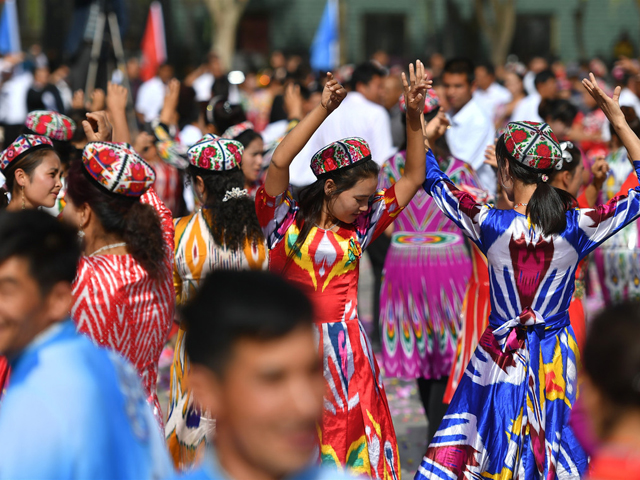
Xinjiang has multiple religions, including Islam, Buddhism, Taoism, Protestantism, Catholicism, and the Eastern Orthodox Church. It has 24,800 venues for religious activities, including mosques, churches, Buddhist and Taoist temples, with 29,300 religious staff, said "Historical Matters Concerning Xinjiang" released by China's State Council Information Office.
"Xinjiang always upholds equality for all religions, showing neither favouritism towards nor discrimination against any religion and allowing no religion to be superior to any other religion," said the white paper.
Xinjiang: peaceful homeland for all ethnic groups
Believers and non-believers enjoy equal rights and obligations, and all law violators, whatever their social background, ethnicity, and religious belief, will be punished in accordance with the law, the white paper said.
The white paper said China is a unified multiethnic country, and the various ethnic groups in Xinjiang have long been part of the Chinese nation. Throughout its long history, Xinjiang's development has been closely related to that of China.
However, in more recent times, hostile forces in and outside China, especially separatists, religious extremists and terrorists, have tried to split China and break it apart by distorting history and facts, the document said.
UN counter-terror czar visits China's Xinjiang
Xinjiang has long been an inseparable part of Chinese territory. Never has it been the so-called "East Turkistan." The Uygur ethnic group came into being through a long process of migration and integration, the white paper said, adding that it is part of the Chinese nation.
In Xinjiang, different cultures and religions coexist, and ethnic cultures have been fostered and developed in the embrace of the Chinese civilisation. Islam is neither an indigenous nor the sole belief system of the Uygur people. It has taken root in the Chinese culture and developed soundly in China, the document said.

















COMMENTS
Comments are moderated and generally will be posted if they are on-topic and not abusive.
For more information, please see our Comments FAQ